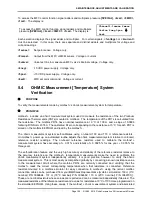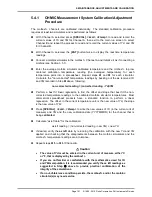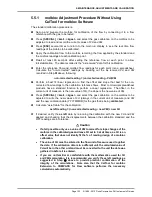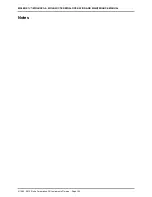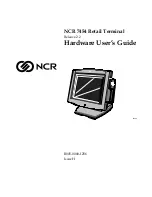
™/S, MOLBLOC TERMINAL OPERATION AND MAINTENANCE MANUAL
© 1995 - 2010 Fluke Corporation, DH Instruments Division
Page 142
5.2
Calibration Of Reference Pressure Transducers (RPTS)
5.2.1
Principle
has two nominally identical, absolute Reference Pressure Transducers (RPTs)
used to measure molbloc upstream and downstream pressure.
To calibrate an RPT, pressure from a pressure standard is applied to the RPTs at ascending
and descending pressure increments over the RPT range. The pressure defined by the
standard and the corresponding RPT readings are recorded at each point. After all of the
pressures have been applied and recorded, adjustments are made to fit the RPT pressure
readings to the standard. Fitting the readings means performing a least squares linear
regression to arrive at the lowest value of the residual of errors of the transducer relative to
the standard. The transducer readings are adjusted by user settable coefficients:
PA
(a pressure
adder
or offset) and
PM
(a pressure
multiplier
or span set) (see Section 5.2.1.1).
is delivered with an interactive reference pressure transducer (RPT) calibration
utility software program that steps the operator through the complete RPT calibration
procedure including applying pressures, collecting data automatically, calculating new PA
and PM values, previewing the results of the new calibration and activating the results of the
new calibration (see the CalTool for RPTs program and documentation provided on the
General Accessories disk delivered with ). also provides complete local
and remote access to RPT calibration coefficients so that RPT calibrations can be performed
without using CalTool software if desired (see Section 5.2.5).
Caution
CalTool for RPTs software provided with the supports the
calibration process of RPTs. The CalTool program and its
manual are provided on the General Accessories Disk with the new
. Most users should use CalTool software to assist in the
calibration of RPTs.
5.2.1.1
PA and PM Coefficients
The coefficients used to adjust RPT readings are designated
PA
(a pressure
adder
or offset) and
PM
(a pressure
multiplier
or span set). The coefficients
affect the RPT reading following:
Corrected reading = (uncorrected reading • PM) + PA
PA
is expressed in pressure (always the SI unit, Pascal [Pa]).
PM
is dimensionless.
There are individual
PA
and
PM
values for each of ’s two RPTs. The
PA
and
PM
values currently in use for each RPT can be viewed in the CALIBRATION function or
the “PCAL” remote command. If adjustments are necessary when calibrating an
RPT, the adjustments are made by adjusting the
PA
and
PM
values.
Caution
As editing PA and PM values will change RPT calibration, they
should only be edited by qualified personnel as part of the
calibration process. Caution should be taken to avoid accidental
editing. For information on preventing access to calibration
information, see Section 3.6.2.






















